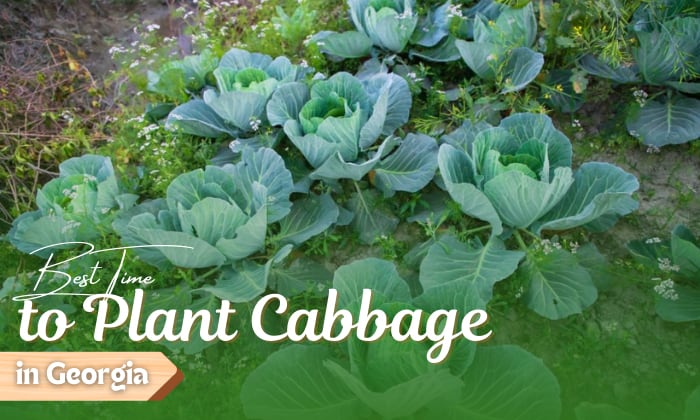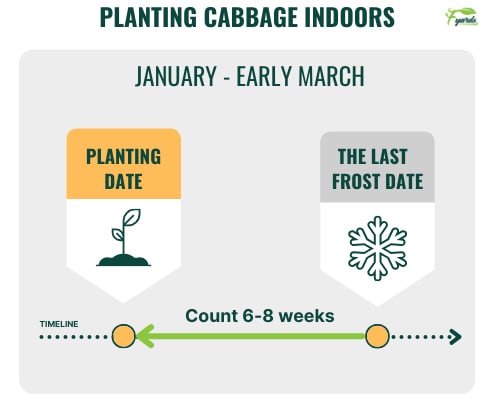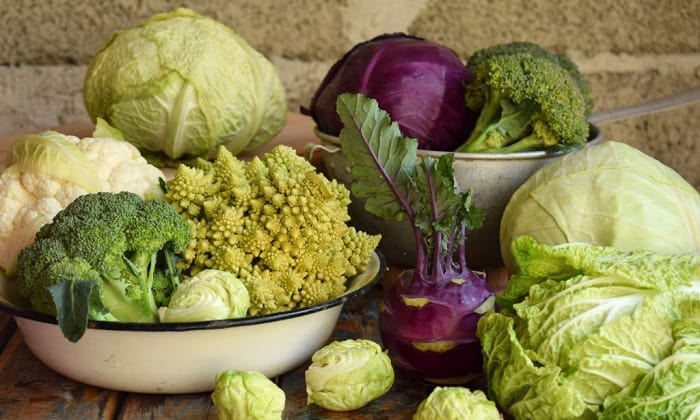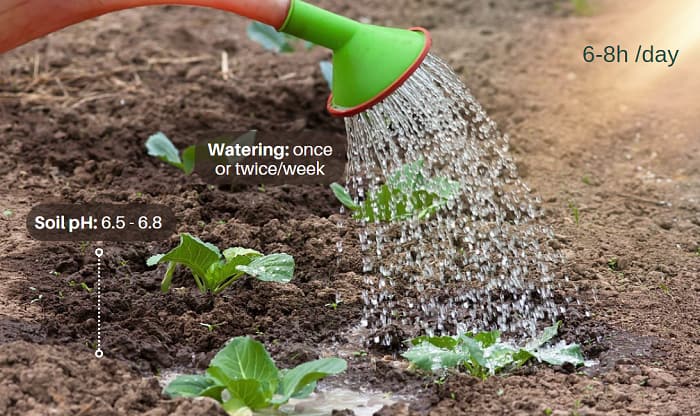Cabbage is grown primarily for its compact collection of leaves known as the “head.” It has different colors of green, red, and purple, with textures of smooth and wrinkly.
Cabbage is a cool-season crop that can be sown in the spring, between January 15 and March 15 or in the fall, around August 1 to October 1.
Wondering when to plant cabbage in Georgia? Read our planting guide!
Table of Contents
Best Time to Plant Cabbage in Georgia
For spring planting, the ideal window is from January to early March. This time frame ensures no risk of severe frost while the weather maintains its coolness.
As a general guideline, starting cabbage seeds indoors about 6 to 8 weeks before the projected last frost date is recommended.
Once the seedlings have grown for six weeks or developed two true leaves, they should have no trouble adjusting to the outdoor environment.
Another reason why it is better to cultivate during spring is to ensure a harvest before the onset of summer heat. Allocate 60 to 90 days for growth before temperatures consistently exceed 80ºF (27ºC).
You can use the table below to determine the frost dates in your area! If you’re wondering “Is it too late to grow cabbages?” sow them eight to fourteen weeks before the first frost.
| Places in Georgia | Last Frost Date | First Frost Date | Planting Season |
| Atlanta | March 23 | November 13 | 234 days |
| Augusta | March 6 | November 26 | 264 days |
| Columbus | March 14 | November 16 | 246 days |
| Savannah | March 12 | November 21 | 253 days |
| Waycross | Mar 24 | Nov 9 | 229 days |
For a fall harvest, plant cabbage from late July to early August. This involves starting seeds indoors around mid to late June and relocating the young plants to the garden between mid to late July.
With this schedule, the cabbage can mature under cooler weather conditions and develop better flavors.
Cabbage Planting Calendar
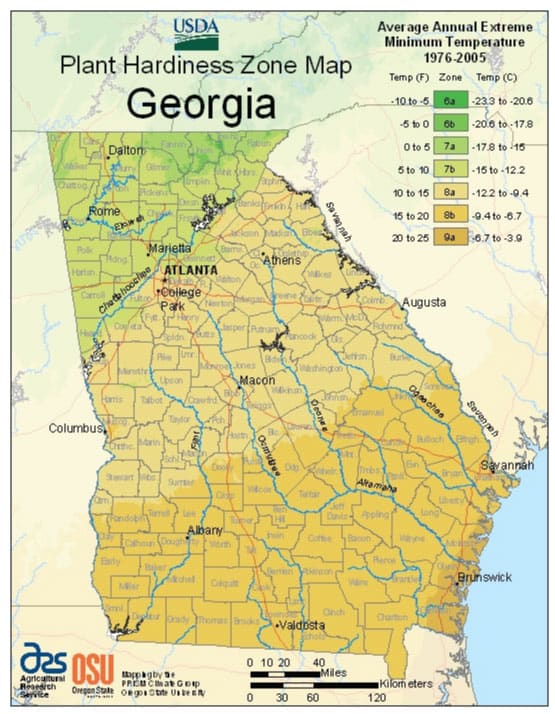
Cabbage grows in zones 1-10. Since Georgia falls within the USDA hardiness zones 6a to 9a (indicating a milder climate relative to many other U.S. regions), it is suitable for cabbage cultivation.
You can calculate the planting time for each zone based on its frost estimate, which we have done below.
| Hardiness zone | Average last frost | Sow seeds indoors | Transplant seedlings outdoors |
| 6 | April 1 | February 5 | March 18 |
| 7 | March 22 | January 26 | March 8 |
| 8 | March 13 | January 17 | February 28 |
| 9 | February 6 | December 12 | January 23 |
Cabbage Varieties
Given that Georgia is under USDA Hardiness Zones 6a-9b, you can successfully cultivate the following cabbage varieties in your region!
- Gonzales – a cabbage variety recognized for its big, circular heads and outstanding resistance to heat.
- Stonehead – a robust, round, and moderately-sized early cabbage variety that is excellent for cooking.
- Savoy King – regarded as one of the best-eating cabbage varieties, featuring a crispy texture and curly crinkled leaves.
- Late Flat Dutch– renowned for its impressive size and is a standard choice for the late part of the growing season.
Refer to this table for more information!
| Variety | Exposure | Days of Maturity | Color |
| Gonzales |
Full Sun/ Partial Shade |
55 to 66 days | Green |
| Stonehead | 70 days | Gray-Green | |
| Early Jersey Wakefield | 60-75 days | Dark Green | |
| Savoy King | 80 days | Light to Dark Green | |
| Late Flat Dutch | 100 days | Blue Green |
Tips for Successful Cabbage Cultivation
The key to successful cabbage cultivation lies in ensuring consistent and uninterrupted growth. This entails providing nutrient-rich soil, ample water, and enough sunlight for cabbage seeds.
1. Plant Requirements
- Soil
Sow cabbage in soil with a balance between good drainage and moisture retention. Aim for a soil pH of 6.5 to 6.8 with a light, loamy texture.
You can enhance your soil quality by incorporating well-decomposed manure or compost.
- Sunlight
Similar to many vegetables, cabbages require a minimum of 6-8 hours of direct sunlight daily (more sunlight is advantageous to growth). Thus, when selecting a site for growing cabbage in Georgia, always opt for an area with full sun or partial shade.
- Water
Cabbage has moderate water requirements but demands regular irrigation. In the context of Georgia’s climate, providing water to your cabbage plants at least once or twice per week is advisable.
The objective is to keep the soil consistently damp but not excessively saturated. When there is insufficient rainfall, aim to supply the plants with around 1 to 2 inches of water per week.
2. Succession Planting
To maintain a steady cabbage supply, practice succession planting. This involves sowing seeds or transplanting cabbage every three to four weeks.
Conclusion
Whether you’re a spring enthusiast or prefer the crisp fall harvest, our guide covers when to plant cabbage in Georgia for each season! We hope you will embrace the world of cabbage cultivation using our insightful tips.
Feel free to revisit this guide, as it’s designed to be your trusted planting companion. We wish you the delight of harvesting bountiful cabbages from the fertile soil of Georgia.

Hi, I am William – Floridayards’ digital content creator. My job is to find answers to all your concerns with thorough research and our team’s expert advice. I will also bring you honest reviews on the best products and equipment for raising your beautiful garden. Please look forward to our work!


